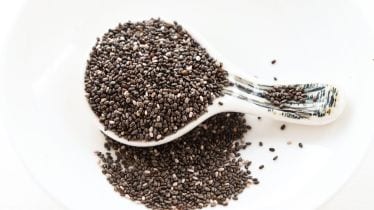Although chia seeds are small, they are highly nutritious. Studies suggest that the nutrients present in the chia seeds may promote heart health, support strong bones, and improve blood sugar management.
As more and more people are aware of the benefits of chia seeds, there is now more inclusion of this superfood into their diet. However, sometimes while buying these seeds, people often confused them with Sabja (Basil) seeds.
There seems to be a lot of confusion over the two, and most people are unable to differentiate Chia from Sabja seeds. Both these seeds look extremely similar to each other, however, there is still a lot of difference.
What are chia seeds?
Chia seeds are the edible seeds of Salvia hispanica, a flowering plant in the mint family native to central and southern Mexico. They are loaded with fibre, Omega-3 and proteins. Some studies point out that Chia seeds can boost your energy, stabilize blood sugar levels and are highly recommended for weight loss.
One tablespoon of chia seeds contain: Calories- 60, Total fat- 2.5 grams, Omega 3 fat- 1,240 mg, Total carbs- 7 grams, Dietary fibre- 7 grams, Protein- 2 grams, Calcium- 15% of the daily intake, Iron- 10% of the daily intake and Magnesium- 10% of the daily intake.
What are Sabja seeds?
Sabja seeds also known as basil seeds are native to India and the Mediterranean region. Sabja seeds help in cooling down the body and it is often recommended during scorching summer months.
One tablespoon of sabja seeds contain: Calories- 60, Total fat- 3 grams, Omega 3 fat- 2,880 mg, Total carbs- 5 grams, Dietary fibre- 5 grams, Protein- 3 grams, Calcium- 8% of the daily intake, Iron- 9% of the daily intake and Magnesium- 8% of the daily intake.
How to consume chia seeds?
- Chia seeds can be consumed both raw and soaked.
- Chia seeds are also added to smoothies and shakes to enhance their taste.
- How to consume sabja seeds?
- Sabja seeds must always be consumed after soaking.
- Sabja seeds can be added to lemonade, summer drinks and salads as they give a slightly minty flavour to the beverage.
How are chia seeds and sabja seeds different?
Basil seeds are black, tiny and round. Meanwhile, chia seeds are a bit larger, more oval in shape, and come in a variety of colours, including grey, brown, white and black.
Chia takes time to absorb water and swell up, while sabja swells up in seconds.
